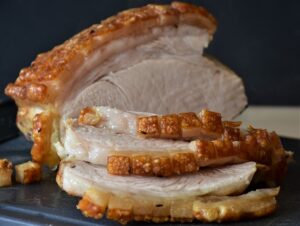Introduction
Brisket is a popular cut of meat that is often associated with barbecues and smoked dishes. It is known for its rich flavor and tender texture. But how much protein does brisket actually contain? In this article, we will explore the protein content of brisket and its nutritional value.
Protein Content in Brisket
Protein content: Brisket is a relatively high-protein meat. On average, a 3-ounce (85 grams) serving of cooked brisket contains around 23 grams of protein. This can vary slightly depending on the specific cut of brisket and how it is prepared.
Protein quality: Brisket is considered a complete protein source, meaning it contains all the essential amino acids that our bodies need. These amino acids are the building blocks of protein and play a crucial role in various bodily functions, including muscle growth and repair.
Nutritional Value of Brisket
In addition to protein, brisket provides several other important nutrients:
Fat: Brisket is a relatively fatty cut of meat. A 3-ounce serving of cooked brisket contains around 14 grams of fat. While some of this fat is saturated fat, which should be consumed in moderation, brisket also contains monounsaturated and polyunsaturated fats, which are considered healthier fats.
Iron: Brisket is a good source of iron, a mineral that is essential for the production of red blood cells and oxygen transport in the body. A 3-ounce serving of cooked brisket provides approximately 2 milligrams of iron, which is about 11% of the recommended daily intake for adults.
Zinc: Brisket is also a source of zinc, an essential mineral that plays a role in immune function, wound healing, and DNA synthesis. A 3-ounce serving of cooked brisket contains around 3 milligrams of zinc, which is about 27% of the recommended daily intake for adult men and 36% for adult women.
Health Considerations
While brisket can be a nutritious protein source, it is important to consider the cooking method and portion size. Brisket is often prepared using high-heat cooking methods, such as smoking or grilling, which can lead to the formation of potentially harmful compounds like polycyclic aromatic hydrocarbons (PAHs) and heterocyclic amines (HCAs). These compounds have been linked to an increased risk of certain cancers.
To minimize the formation of these compounds, it is recommended to cook brisket at lower temperatures and avoid charring or burning the meat. Additionally, portion control is important as brisket is a calorie-dense food. Be mindful of your overall calorie intake and balance it with other nutrient-rich foods.
Conclusion
Brisket is a protein-rich meat that provides essential amino acids, iron, and zinc. It can be a nutritious addition to a balanced diet. However, it is important to consider the cooking method and portion size to minimize the formation of potentially harmful compounds and maintain a healthy calorie balance.
References
1. USDA FoodData Central: https://fdc.nal.usda.gov/
2. National Institutes of Health: https://www.nih.gov/
3. American Cancer Society: https://www.cancer.org/













